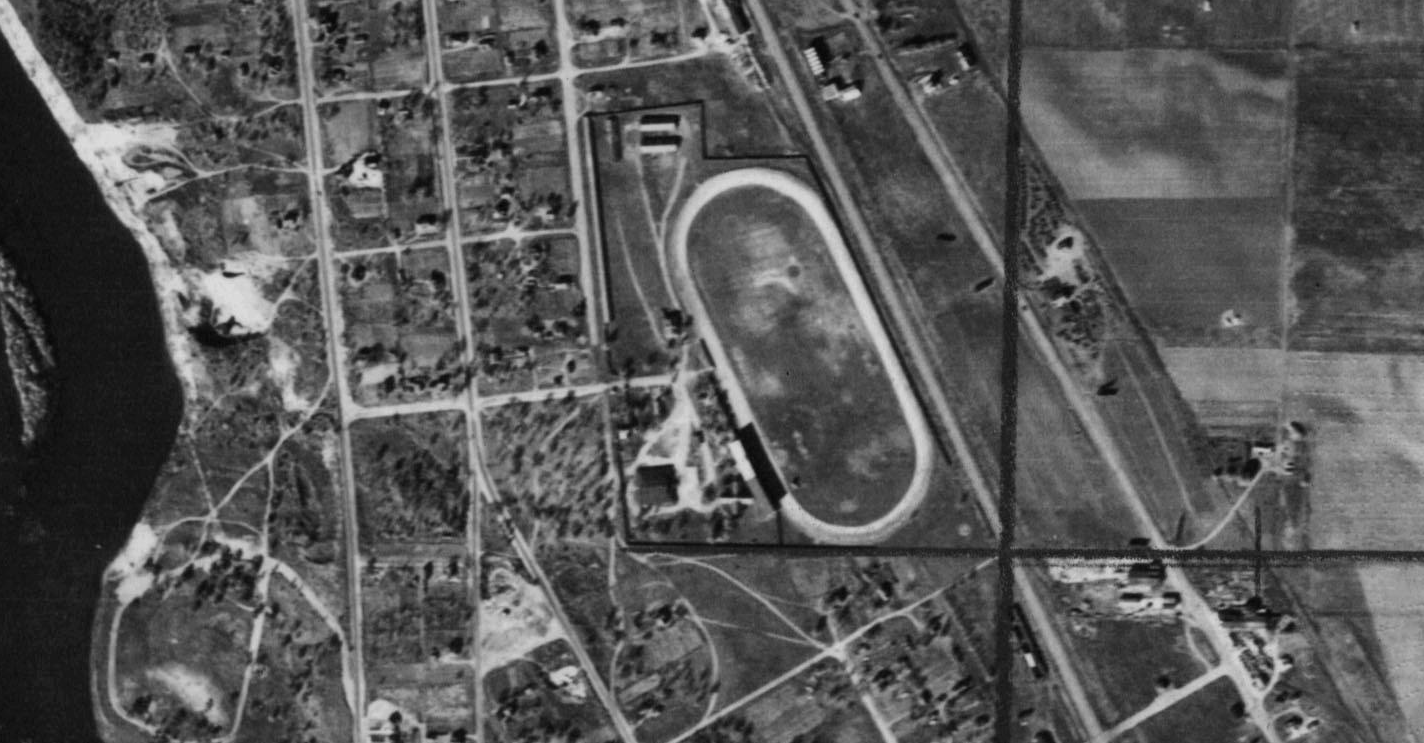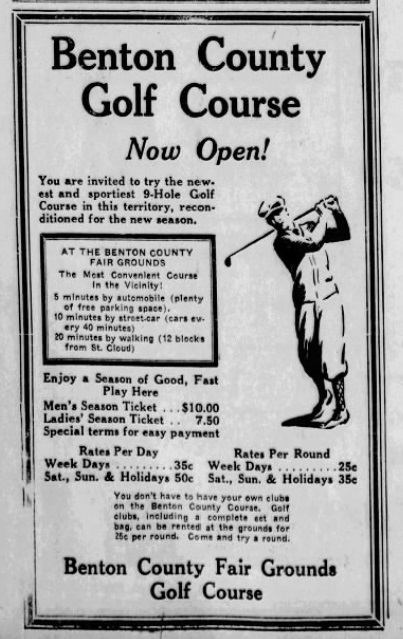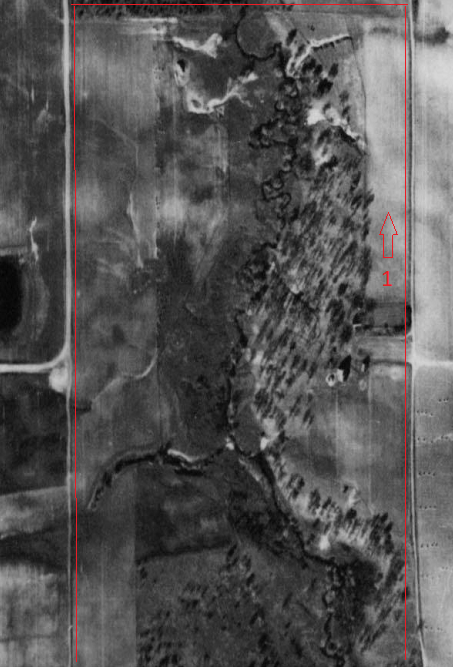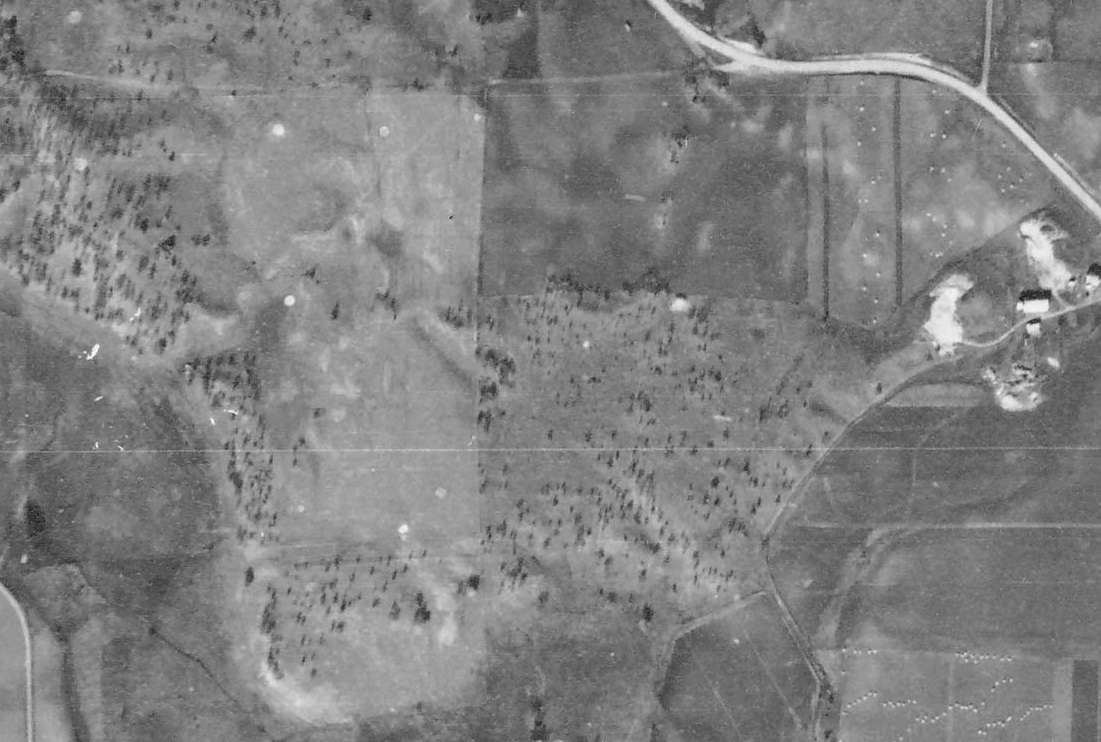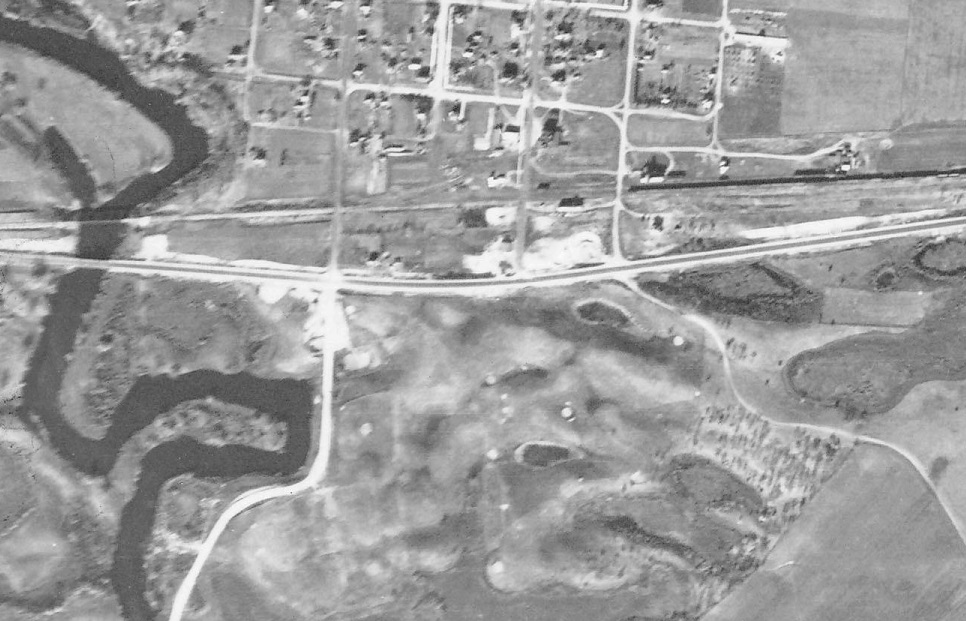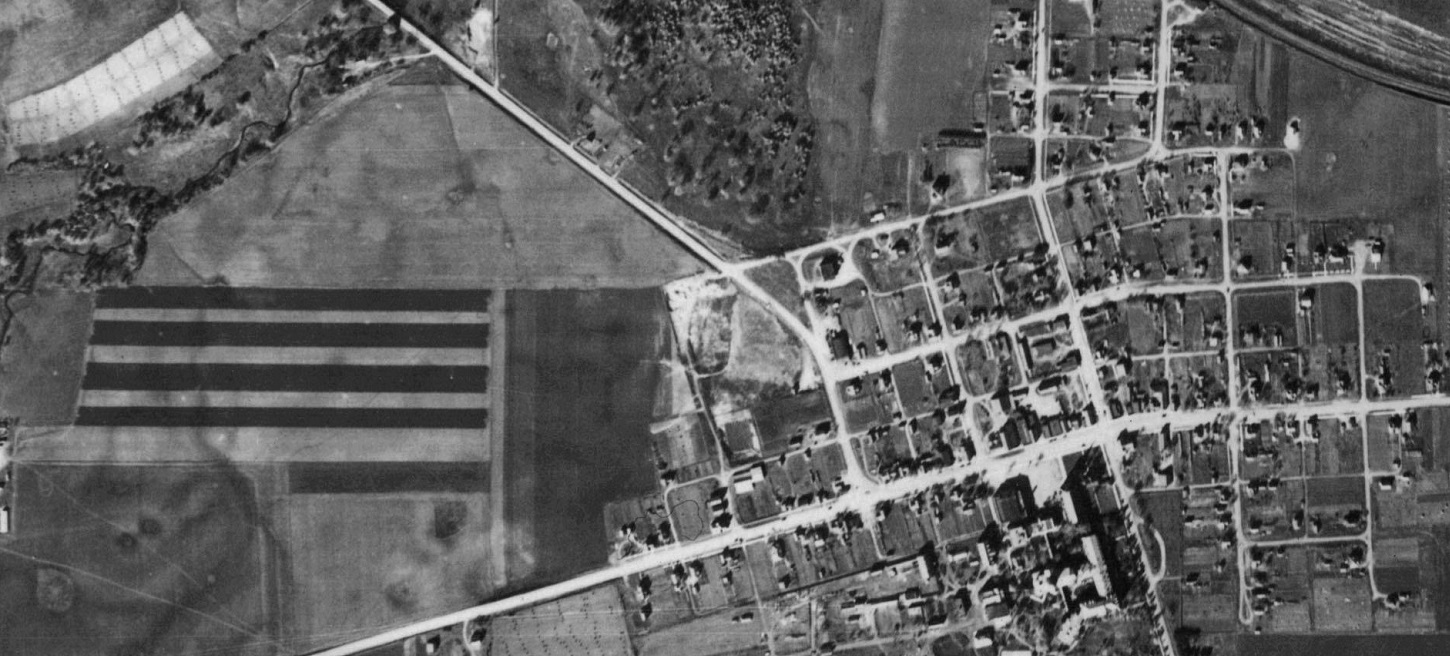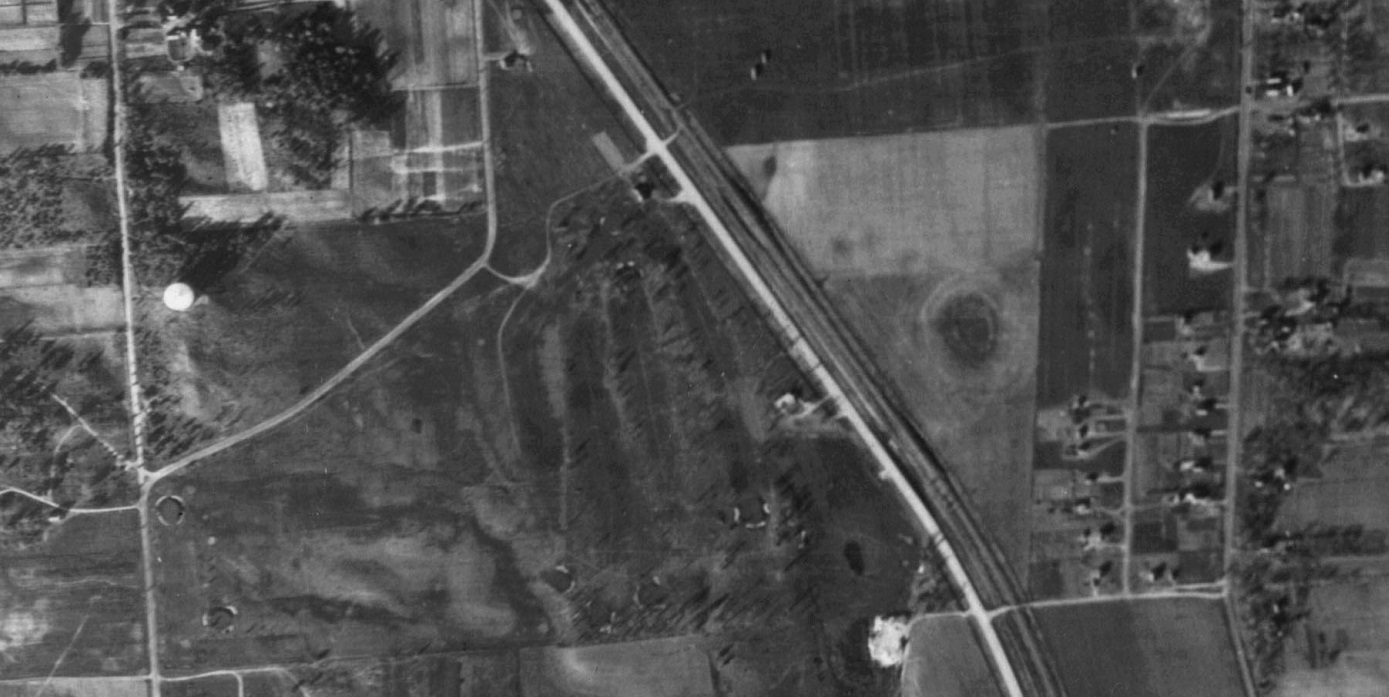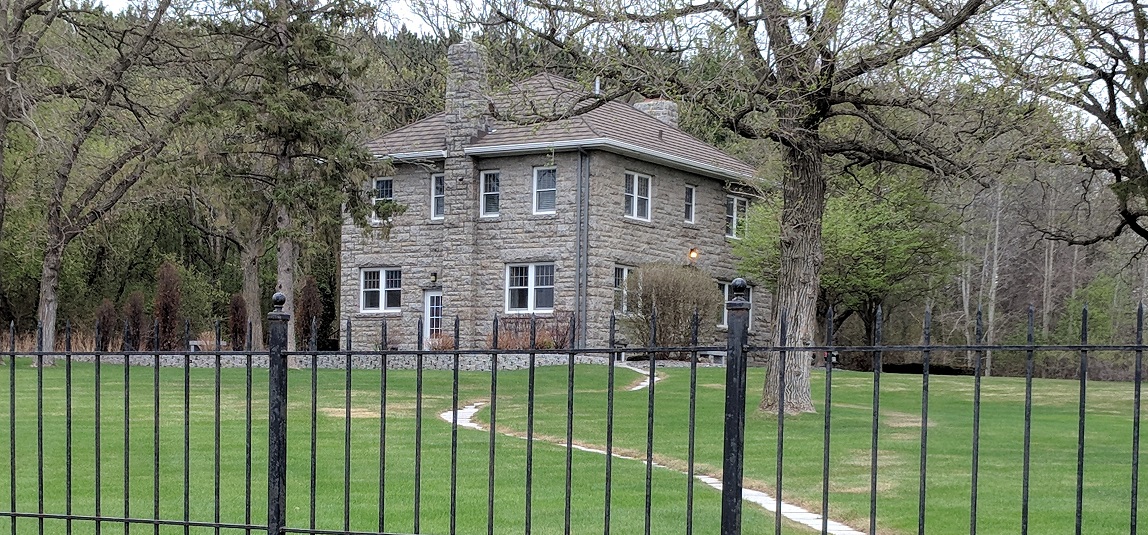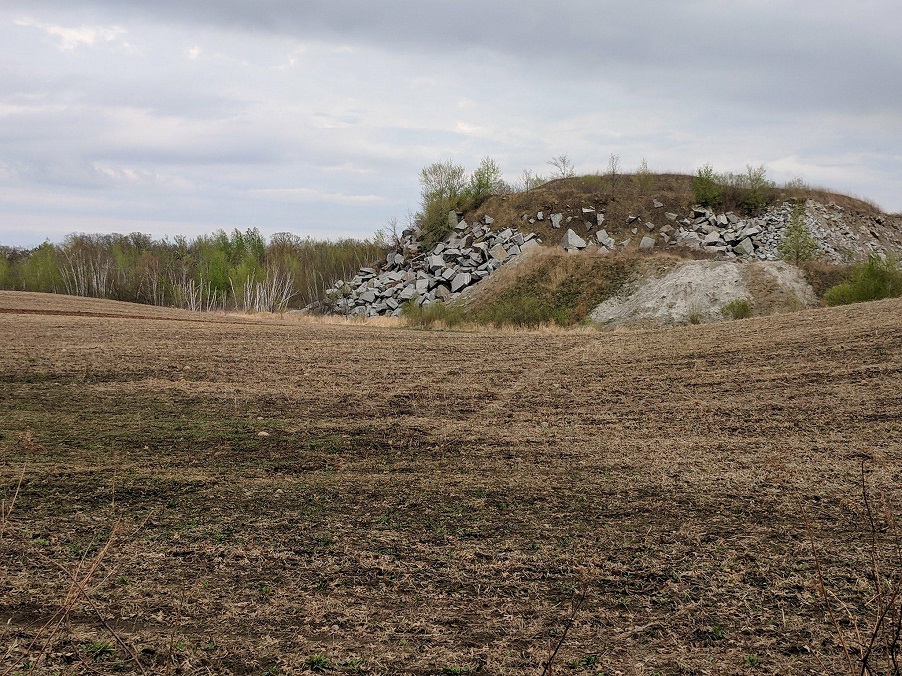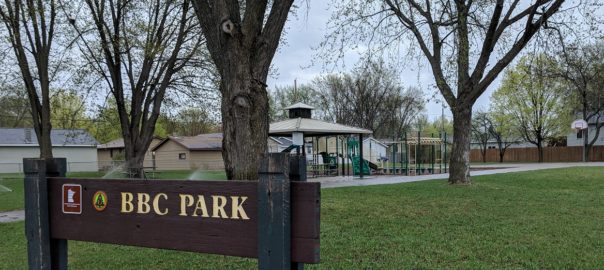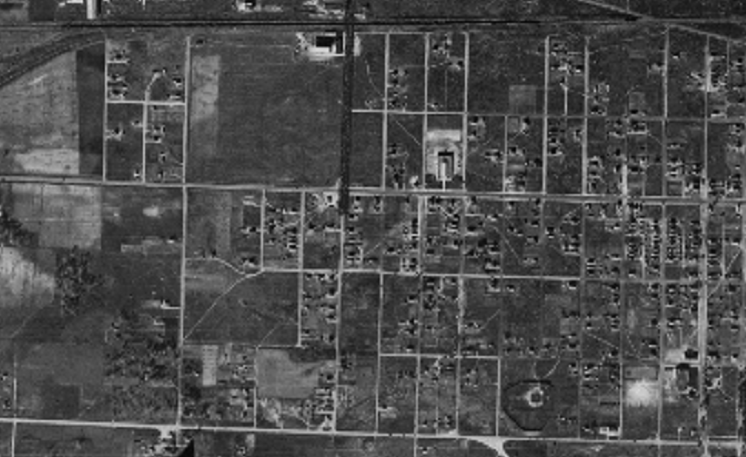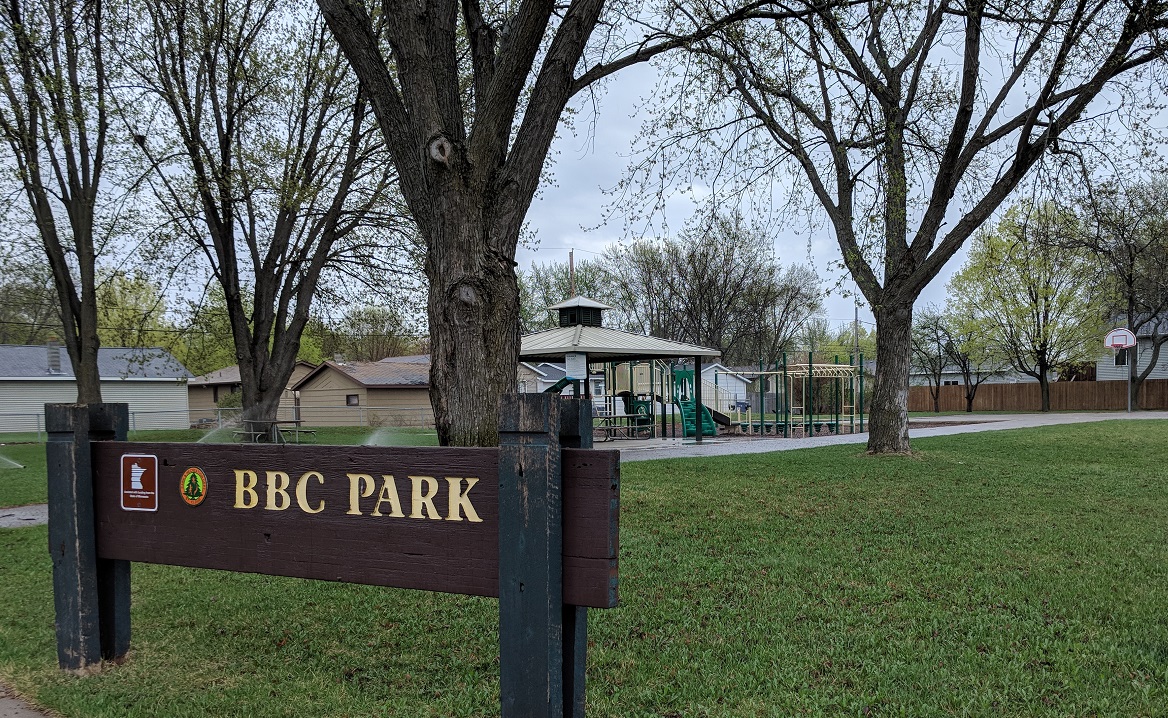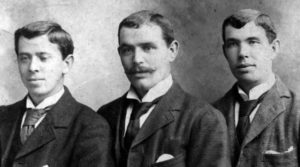Almost equidistant from Minnesota Highway 23, our asphalt reference point of note for St. Cloud-area lost golf courses, lie two more abandoned layouts, both on sites that you wouldn’t think of as terrific golf-course sites any more than you might think of the Everglades as a terrific site for a NASCAR track.
A college campus, and a fairgrounds. Different cities. Different sides of the highway. Similarly unusual venues.
St. Cloud Teachers College course (lost course No. 196)
The St. Cloud Teachers College golf course began with an elevated first tee atop the steps to the English building, where pedantic professors refused to acknowledge golfers who asked fellow competitors, “What club are you teeing off with?” and instead insisted on “With which club off are you teeing?” The course concluded at the entrance to the philosophy and liberal arts building, where nihilistic professors perused scorecards and pronounced, “You shot a 107, but I’ll give you a 38 because numbers don’t matter and really nothing else does, either.”
Apologies. Just trying to brush up on my fiction writing.
The very first part of that opening paragraph is true, though. There was a Teachers College golf course, across the Mississippi River to the east of the main campus, that maintained a low-key existence for a half-dozen years in the 1930s.
This particular piece of land was not all about golf, however, as noted in the St. Cloud Times of May 2, 1931.
“Acquisition of a six block tract of land in East St. Cloud for use as an athletic field was announced today by President George A. Selke of the State Teachers college. The land lies north of Michigan avenue S. E. starting at a point four blocks east of the end of Tenth street bridge.”
The whole shebang would be known as College Recreation Field, across the Mississippi River from the college’s main campus and one mile south of Minnesota 23. Its most prominent feature would be a new football stadium, but the Times story noted plans to also include a baseball diamond, a running track, tennis and volleyball courts, and — oh, yeah, what are we going to with all of that open land on the north side? …
… “golf course,” the story said.
Novel idea, right? Well, to some extent. But it wasn’t the first campus golf course in the nation. Ohio State, for instance, had one as early as 1919. It wasn’t the first campus course in the state. The University of Minnesota had iterations dating to the 1920s. And the Teachers College course wasn’t even the first in the St. Cloud area. Professors and students alike played the campus course at St. John’s in Collegeville from approximately 1926-33.
From a golf playability standpoint, the Teachers College plot had promise. From an attractiveness standpoint, not so much. “The plot just acquired will require but little in the way of improvements before ready for use,” the Times reported. “The land is literally ‘as flat as a table.’ ”
In conclusion, wrote the Times, “The installation of a small golf course will open the way for new activities at the college. White it is not the aim to open a complete course, several holes will be available for practice and instruction.”
The College Recreation Field was dedicated on June 24, 1931. Its golf course was six holes long and featured sand greens. A.F. Brainard, head of the college’s physical education department, would oversee summer school classes on the course. The golf grounds appeared to have but one adornment, “a pretty group of oak trees, right at the first tee,” the Times reported on June 25. “This is the only clump of trees on the entire property with the exception of a few smaller ones at the extreme south end and the property is ‘level as a table top.’ ”
Selke was said to have struck the ceremonial first shot at the course. He and Brainard were subjects of “moving pictures … that were taken for the school’s permanent records,” the Times reported. However, the college — known today as St. Cloud State University — appears to no longer have any such Selke-Brainard film, according to university archivist Tom Steman.
Steman noted brief references to the golf course in published university material through the mid-1930s. He noted that a college golf team was established in 1932. I could find no evidence that any varsity meets were played at the campus course; old newspaper references mentioned home meets mostly at St. Cloud Country Club or in a couple of cases the public Hillside Golf Course.
Steman speculated that the golf course didn’t last long. “By the fall of 1937,” he wrote in an email, “Selke Field was dedicated (again but as Sports Field) and football and track moved to Selke Field from the Brown Field, which stood just west of Shoemaker Hall on the main campus.”
Update, June 12, 2018: Tom Steman and I have discussed this at length and, ufortunately, cannot determine with certainty exactly where the golf grounds lay. I am concluding with the notion that the course lay to the north of what was in some references strictly considered Recreation Field, marked “G” below.
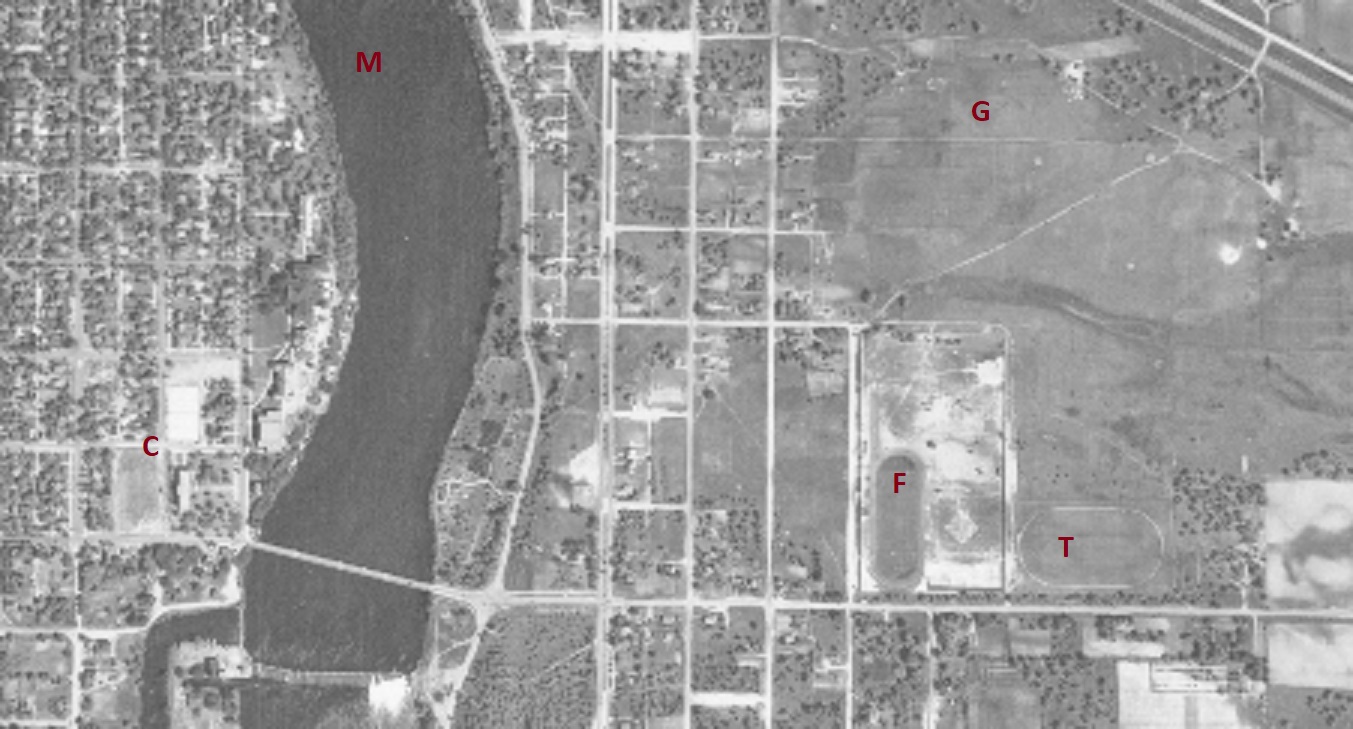
Benton County Golf Course (lost course No. 197)
Published April 1, 1931, in the St. Cloud Times, and not an April Fools’ Day prank:
Three days later, the Times made brief mention of this golf course in a roundup of St. Cloud layouts about to open for the season.
“The Benton County course, situated on the Benton county fair grounds, was opened on Thursday and reports indicate that it will enjoy another successful season. Considerable money has been spent in making this one of the classiest short courses in the community and those in charge report early popularity.”
Like golf on a college campus, golf on a fairgrounds was not a Benton-only notion. A lost golf course on the Roseau County Fairgrounds in the 1930s featured one hole around or over a grandstand. A six-hole course was established in 1928 on the Renville County Fairgrounds.
However, the notion of a golf course on the Benton County Fairgrounds site, one mile north of Highway 23 in Sauk Rapids, apparently was not greeted with universal enthusiasm.
“There seems to be a misunderstanding on the part of many people of this territory,” the St. Cloud Times reported on July 22, 1931, “regarding the Benton County fair, the principal one being that there will be no fair this year.
“There has been no such on the part of the Benton County Agricultural Society. … The idea probably gained belief because of the fact that a golf course has been in operation on the grounds. The golf course is simply a method adopted by the association to utilize the grounds throughout the open season and to create a revenue to assist in conducting the fair.”
Benton County’s fairgrounds golf course also was a six-holer, put into operation in 1930. It covered 1,800 yards, “is clean and sporty and with well-constructed greens and tee-offs,” the Times reported on March 31, 1931. “The short holes are so situated as to allow interesting hazards and, in several instances, are more difficult than the longer ones.”
I found no evidence of the Benton County course in operation beyond 1931, however, and one person I spoke with at the Benton County Historical Society was unaware that such a golf course had ever existed.
If the original concerns about golf taking over fairgrounds were instigated by Mrs. Swenson of Ronneby being concerned that her blue-ribbon crop of petunias were about to be made null and void by a short par 3, maybe, by 1932, petunias had won out over golf course.
